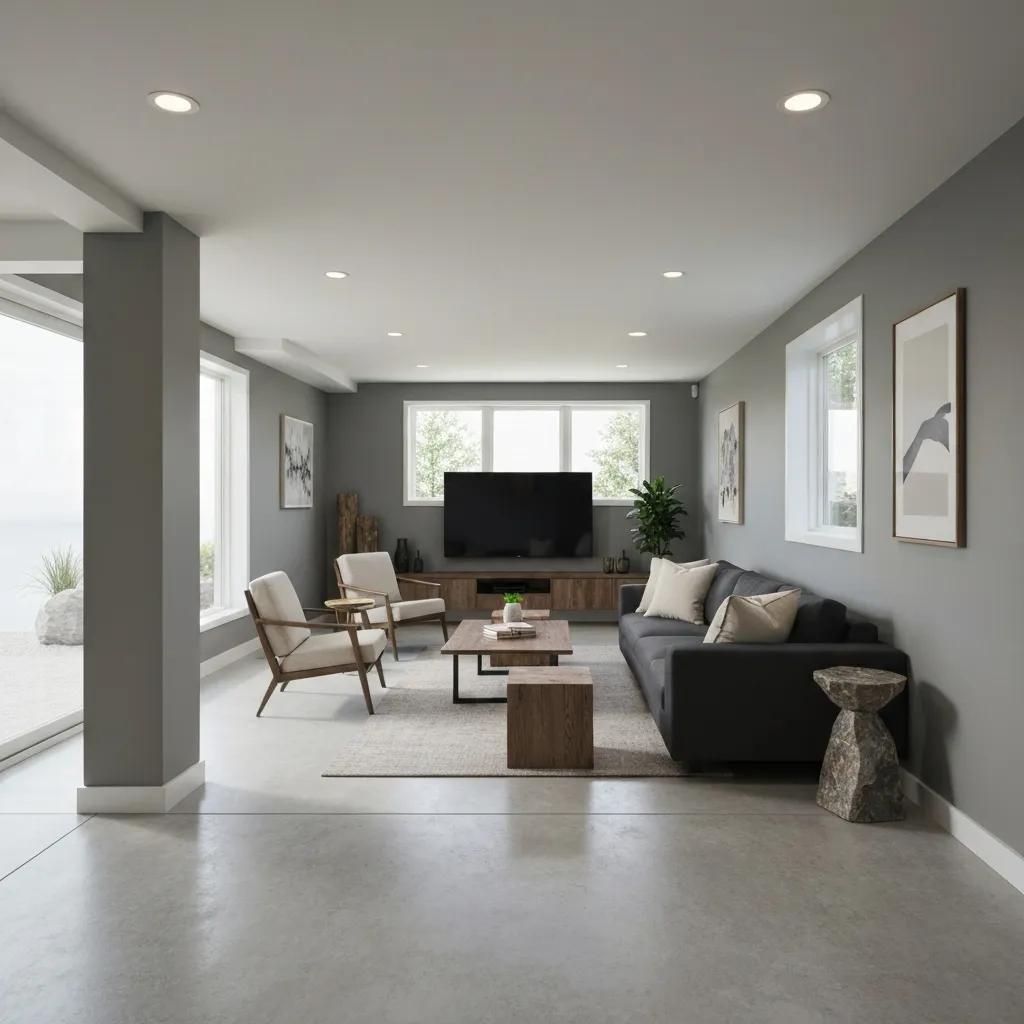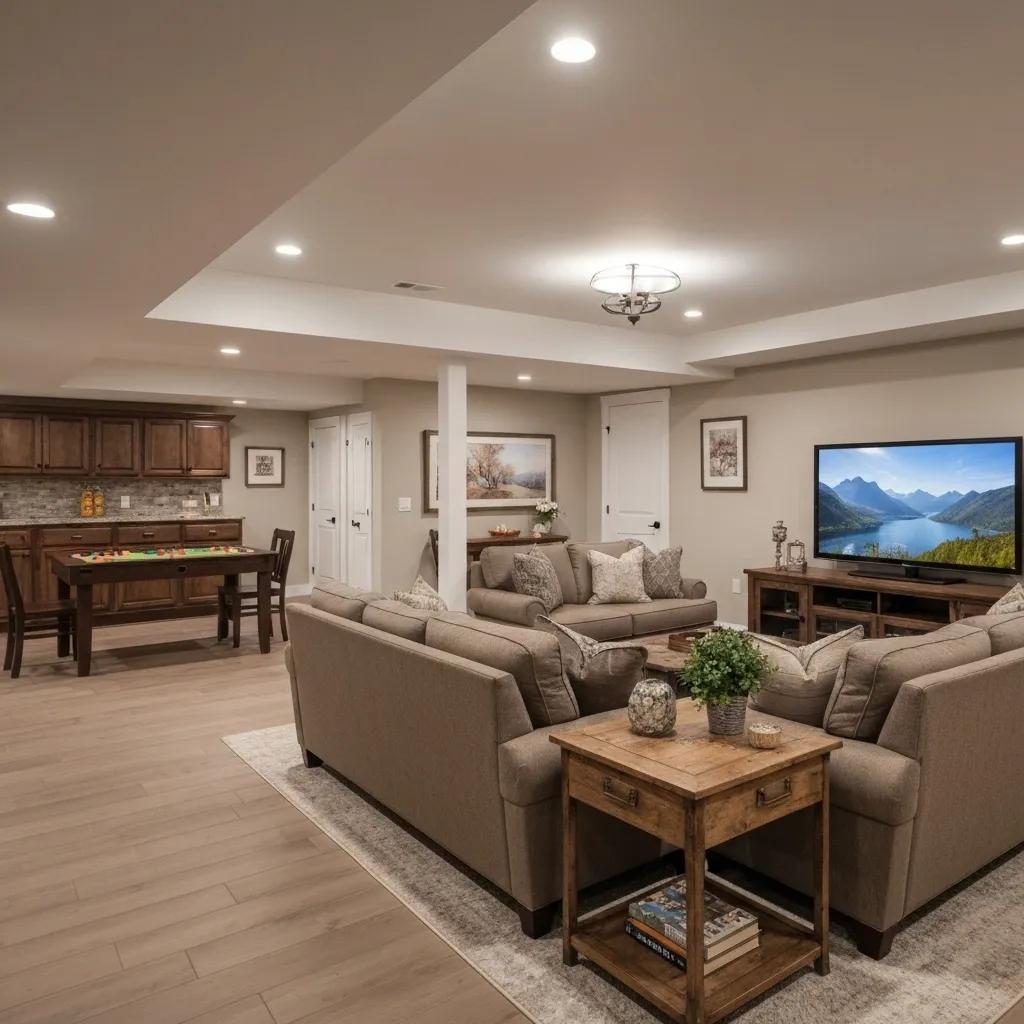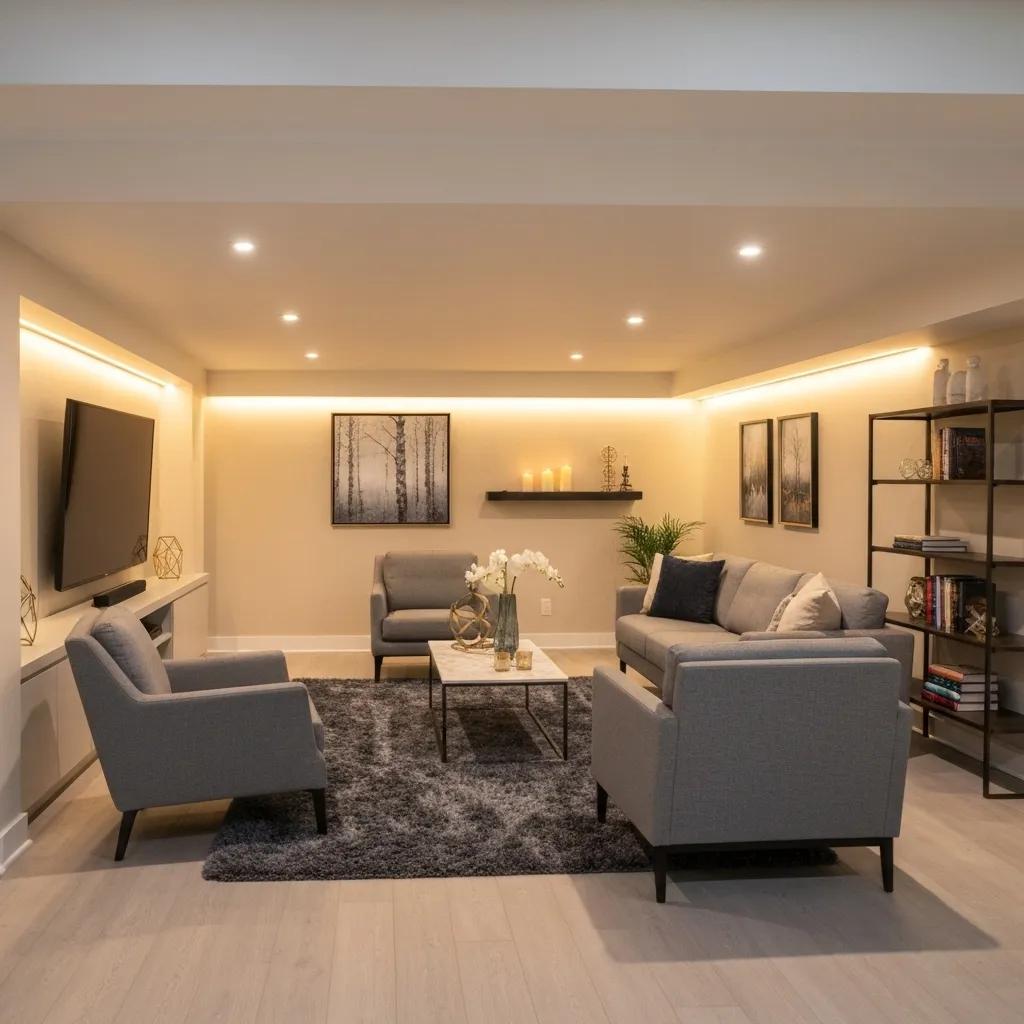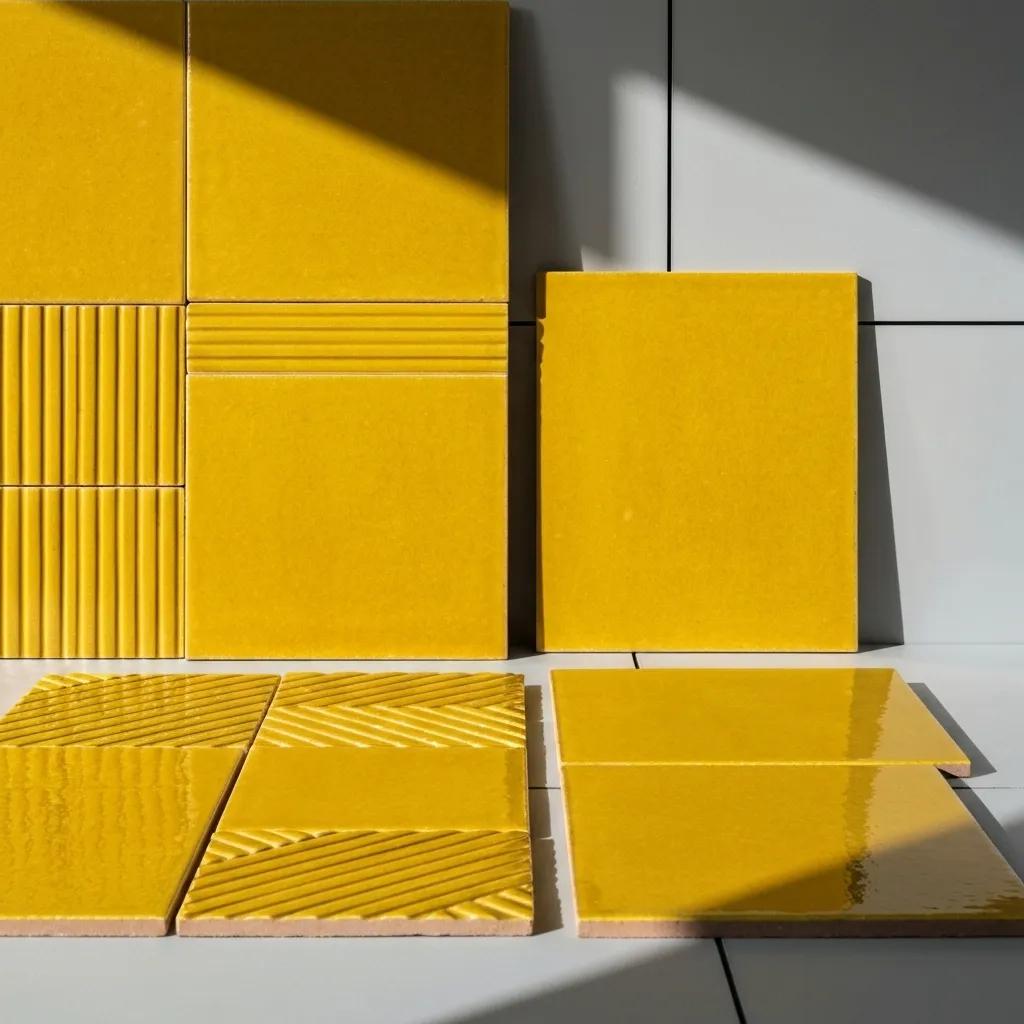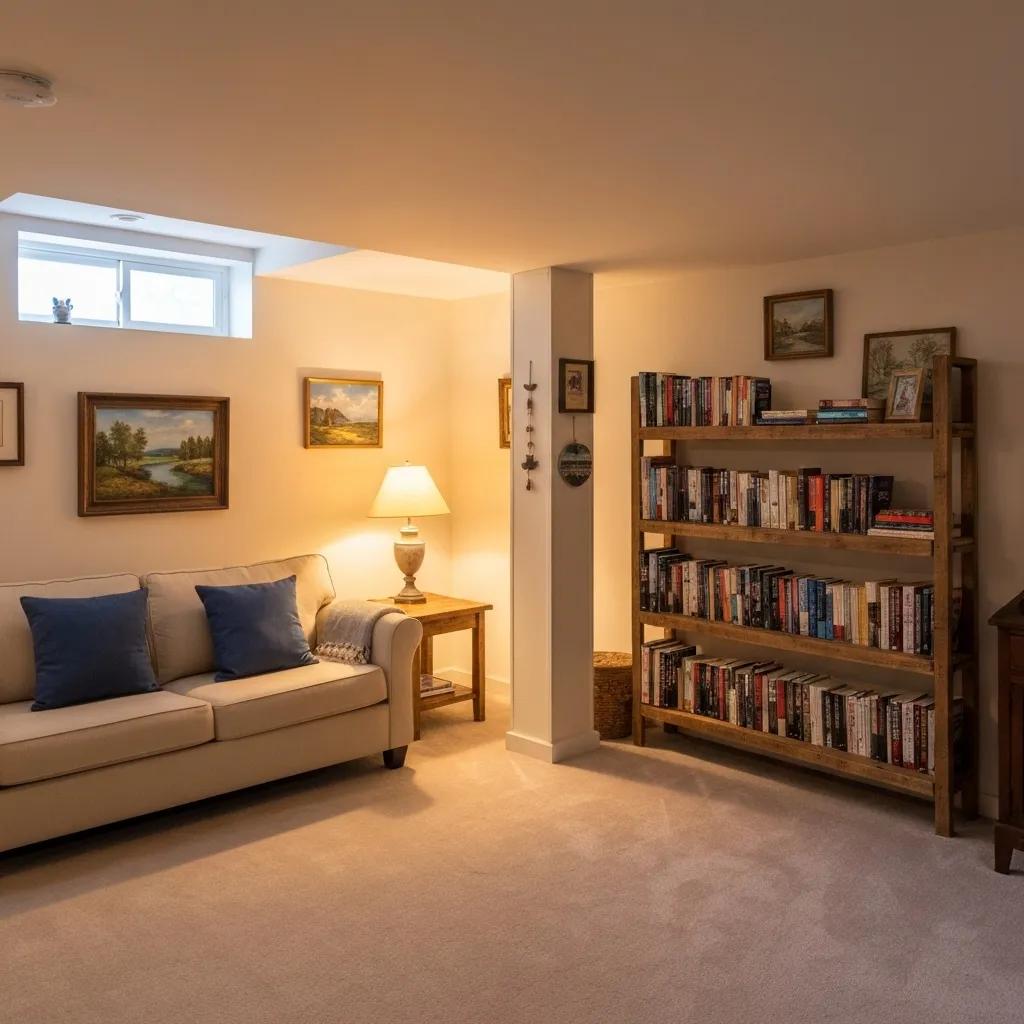
10 Proven Strategies to Keep Your Finished Basement Dry All Year Round
A finished basement can transform underused space into a comfortable living area, but excess moisture undermines its longevity and air quality. This guide shows how to ensure your basement stays dry after finishing by diagnosing moisture sources, applying exterior and interior waterproofing, controlling humidity, and instituting year-round maintenance. Along the way, readers will discover practical techniques—from proper grading and drainage to sump pumps, sealants, dehumidifiers, and checklists—and learn how the Total Basement Finishing™ Remodeling System integrates waterproof, mold-resistant materials into any renovation.
What Are the Most Common Causes of Moisture in Finished Basements?
Moisture in a finished basement stems from soil-borne water pressure, surface runoff, leaks in plumbing, and indoor condensation. Each factor contributes to damp walls, musty odors, and potential mold growth in living areas. key factors in basement finishing costs.
| Cause | Mechanism | Impact |
|---|---|---|
| Hydrostatic Pressure | Lateral force exerted by groundwater | Seepage through foundation cracks |
| Poor Surface Drainage | Accumulation of rainwater against walls | Wall saturation and material degradation |
| High Indoor Humidity | Condensation on cold surfaces | Mold growth and finish material damage |
Identifying these root causes paves the way for targeted solutions, starting with how hydrostatic pressure directly undermines foundation integrity.
How Does Hydrostatic Pressure Affect Finished Basements?
Hydrostatic pressure exerts lateral force on foundation walls, pushing water through micro-cracks and joints and creating damp spots behind drywall installation.
- Water intrusion often appears as seepage lines or bubbling paint.
- Rising pressure can expand cracks, risking structural damage.
Relieving hydrostatic pressure relies on efficient exterior drainage to divert water before it presses against basement walls.
Why Is Proper Exterior Drainage Crucial for Basement Dryness?
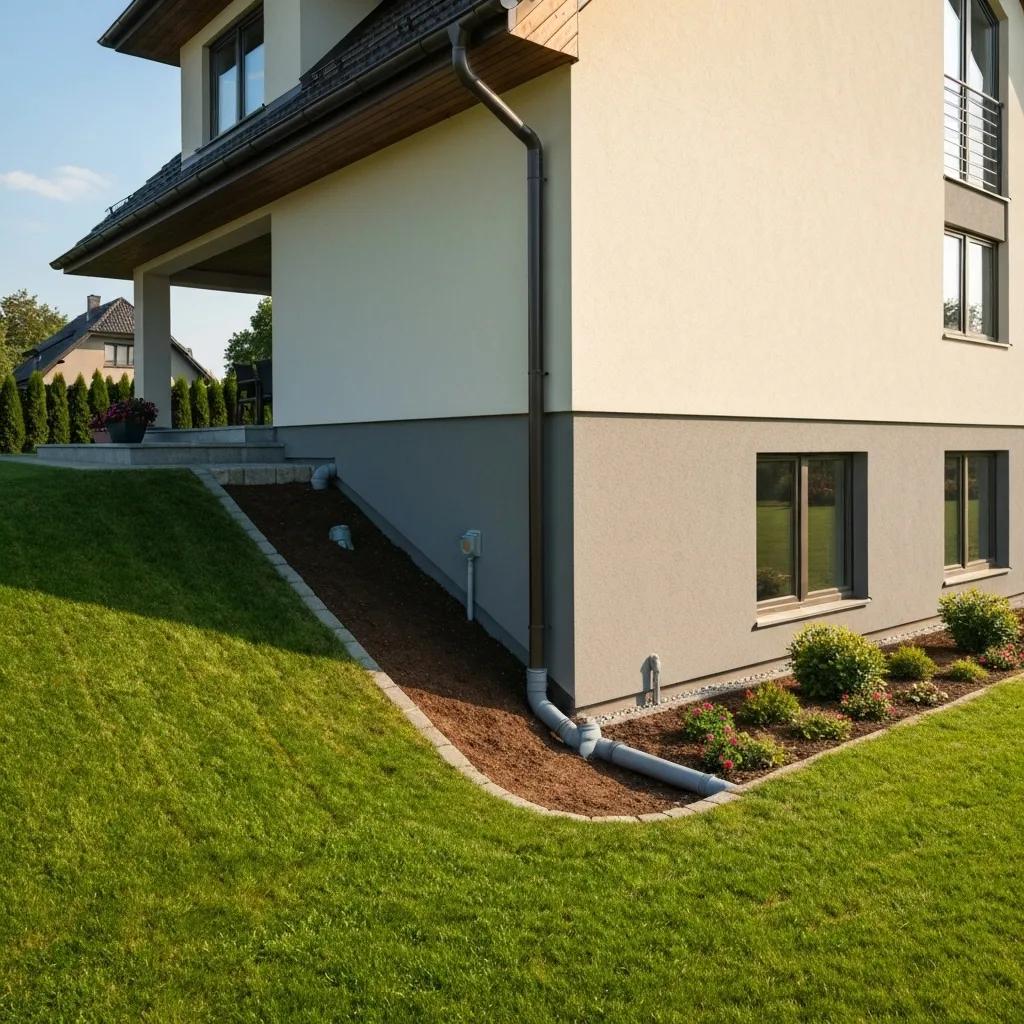
Proper exterior drainage channels rainwater and groundwater away from the foundation, reducing hydrostatic load and preventing wall saturation.
- Sloped grading directs downspout runoff at least 6 ft from walls.
- Swales and French drains intercept surface and subsurface flow.
Effective drainage sets the stage for interior waterproofing by minimizing water that reaches the foundation.
How Do Plumbing Leaks and Condensation Contribute to Basement Dampness?
Continuous plumbing leaks introduce steady moisture behind finishes, while condensation collects on cold pipes and walls as humid air cools.
- Leaky joints, corroded fittings, and hidden pipe cracks add water volume.
- Warm, humid air condenses on cool foundations, especially in uninsulated areas.
Addressing internal sources complements exterior measures and prevents persistent damp conditions in finished spaces.
What Exterior Waterproofing Methods Protect Finished Basements from Water Damage?
Exterior waterproofing creates a barrier between soil and basement walls, preventing seepage and dampness in finished areas. By combining soil grading, gutter management, and membrane systems, homeowners can halt water at the source and protect both structure and finish.
How Does Proper Grading and Landscaping Prevent Basement Water Intrusion?
A consistent 5 percent slope away from the foundation for at least 10 ft ensures surface water naturally runs downhill.
- Backfill soil with coarse gravel to improve drainage.
- Plant water-tolerant vegetation on slopes to stabilize soil and absorb excess moisture.
Landscaping that complements grading reduces the volume of water reaching waterproof membranes.
Why Are Gutters and Downspouts Essential for Finished Basement Waterproofing?
Gutters collect roof runoff and downspouts discharge it well away from walls, preventing pooling at the foundation.
- Extend downspouts with rigid or flexible piping to direct flow 6–10 ft away.
- Inspect and clear gutters quarterly to avoid overflow.
Consistent gutter maintenance keeps membranes and drainage systems from becoming overwhelmed by roof water.
What Are the Benefits of Exterior Waterproofing Membranes and Drainage Systems?
Below is a comparison of common exterior systems and their advantages for finished basements:
| System | Characteristic | Benefit |
|---|---|---|
| Waterproof Membrane | Continuous elastomeric coating | Seals cracks and repels soil moisture |
| Drainage Board | Profiled plastic panels | Channels subsurface water to drains |
| Trench Drain | Perimeter French drain | Collects and transports water away quickly |
Combining these infrastructure elements ensures hydrostatic pressure never compromises interior finishes.
How Can Interior Waterproofing Keep Your Finished Basement Dry?
Interior waterproofing acts as a secondary defense when exterior measures are insufficient or in existing homes. By installing drainage channels, sump pumps, and protective coatings inside, water is intercepted before it affects finished surfaces.
What Are Interior Drainage Systems and How Do They Work?
Perimeter French drains or channel systems installed beneath floor slab collect seepage and convey it to a central sump pit.
- Perforated pipe wrapped in filter fabric prevents sediment clogging.
- A layer of crushed stone ensures rapid water flow.
This network captures infiltrating water and prepares it for removal by a sump pump.
How Does a Sump Pump Prevent Basement Flooding?

A sump pump activates automatically when water reaches a defined level in the pit, pumping discharge through a dedicated pipe to the exterior.
- Submersible pumps minimize noise and handle higher flow rates.
- Battery backup models maintain protection during power outages.
Integrating a reliable sump pump eliminates standing water and reduces flood risk in finished areas.
What Are Effective Sealants and Vapor Barriers for Finished Basement Walls?
Specialized polyurethane sealants fill hairline cracks and create a moisture-blocking layer, while polyethylene vapor barriers installed behind wall panels inhibit vapor diffusion. The Total Basement Finishing™ Remodeling System links these barriers with mold-resistant wall panels for a seamless, moisture-controlled finish that enhances both structural integrity and indoor air quality.
How Do You Control Humidity and Prevent Mold in Finished Basements?
Even in well-sealed basements, elevated humidity can condense on cool surfaces and foster mold. Environmental controls manage moisture levels in the air to keep finishes and furnishings safe. maximizing space efforts
Which Dehumidifiers Are Best for Finished Basement Humidity Control?
Refrigerant dehumidifiers with adjustable humidistats ranging from 30 to 50 pints per day suit medium-sized finished spaces.
- Integrated pumps can evacuate water to a drain.
- Energy Star models offer efficient operation.
Strategically placing a dehumidifier in the highest-moisture zone ensures balanced humidity throughout the basement.
How Does Proper Ventilation Reduce Moisture and Mold Growth?
Mechanical ventilation systems exchange humid indoor air with drier exterior air or conditioned living areas.
- Exhaust fans above laundry or utility areas expel moisture sources.
- Balanced heat recovery ventilators maintain temperature while airing out the space.
Consistent airflow interrupts condensation cycles and inhibits mold spores.
Why Is Pipe Insulation Important for Moisture Prevention?
Insulating cold water lines with closed-cell foam sleeves prevents warm air from condensing on their surfaces.
- Insulation thickness matches local dew-point conditions.
- Sealed seams eliminate gaps where moisture could form.
Preventing pipe-drip condensation removes a common hidden source of basement dampness.
What Maintenance Steps Ensure Your Finished Basement Stays Dry Year-Round?
Ongoing inspections and timely repairs keep small issues from undermining basement finishes and air quality. A proactive maintenance routine protects both living spaces and investments.
What Should a Seasonal Basement Inspection Checklist Include?
A concise checklist covers critical elements:
- Check wall and floor joints for new cracks or efflorescence.
- Test sump pump activation and battery backup.
- Clean gutters, downspout screens, and filter trays on dehumidifiers.
- Verify grading has not eroded near the foundation.
Completing these tasks each spring and fall catches potential failures before they escalate.
When Is It Time to Call a Professional for Basement Waterproofing?
Persistent moisture despite DIY measures, visible mold colonies, recurring sump pump backups, or foundation cracks wider than 1/8 in. signal the need for expert assessment and remediation to safeguard finished spaces.
Implementing these ten strategies—root-cause diagnosis, exterior and interior waterproofing, humidity management, and regular maintenance—ensures a consistently dry, healthy, and durable finished basement.


